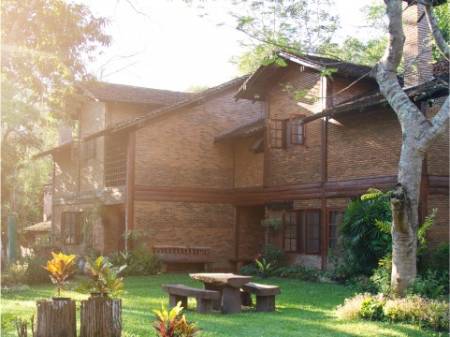Hidden Buyer Financing Issues That Can Kill a Condo Sale
We’ve all heard of real estate dealings gone bad.
If not, feel free to Google “closing horror stories” and view the thousands of results – each page with multiple cautionary tales of woe.
That’s why when evaluating an offer, one of the main questions you should always ask is “if I accept this contract, am I confident the buyer will be able to proceed all the way to settlement.”
If a buyer is not paying cash and needs a mortgage, you – and definitely your listing agent — should be aware of the hurdles he or she will face in getting a condo loan approved.
Knowing these requirements BEFORE listing your condo for sale can help you sell for more money while preventing a potentially disastrous situation down the line.
Here’s a little more information on how the process works….
The Condo Questionnaire
All lenders have guidelines a condominium must meet before a buyer’s loan is approved.
Lenders gather this information by having the condo association or management company complete a “Condo Questionnaire” or “Lender Questionnaire.”
This questionnaire reports on the overall financial health of a condo building and contains anywhere from 15 to 40 questions, depending on the type of loan a buyer is pursuing.
The main criterion that must be met is applicable to 99% of all lenders in the United States.
Delinquent HOA Dues
One of the common questions the form asks is “How many unit owners are delinquent on their monthly HOA dues?”
The current standard limit for Conventional and FHA loans allows up to 15% of the owners to be delinquent.
For example, if there are 100 units in a condo building and 16 owners are delinquent on dues, a buyer would almost certainly be prevented from obtaining a mortgage to buy a unit in that particular building.
There are some ways around this.
Generally speaking, however, a delinquency ratio over 15% is likely to kill a deal.
The Investor Ratio
Another major factor that will impact the type of loan a buyer may obtain is the condominium’s “investor ratio” or “investor concentration.”
On the lender questionnaire, condo management must declare how many of the condo units are occupied by their owners as opposed to a renter.
This constitutes the investor ratio – the higher the number, the fewer the potential lending products that exist for a buyer.
For example, if there are 100 units in a building and more than 50 of them are occupied by a renter, mortgage options are scarce.
In turn, the pool of possible buyers for a seller attempting to sell is smaller
(Note: The Senate just passed a law easing these guidelines for FHA loans).
Additional Common Pitfalls
A few other major areas of concern to a lender are as follows:
1) The amount of reserves the condo association has in its budget; 2) The amount of and the particular type of insurance coverage the association maintains; and, 3) The amount of commercial space that exists as part of the overall building.
Example
Let’s take a look at one of those real life horror stories to highlight the issue…
A seller lists his condo for sale with an asking price of $300,000.
Two days later, he receives two offers.
The first offer is for $300,000 with a 5% down payment.
The second offer is for $290,000 with a 20% down payment.
All other factors are equal.
Common sense tells the seller to take the full price offer, as he believes he will walk away from the deal with more money.
So he does.
The buyer has a strong pre-approval from a local lender and everything looks good to close at the end of the month.
The seller is excited and begins to plan his own move since the condo is now under contract.
A week later the appraisal comes in from the buyer’s lender at a $300,000 value – the seller is teeming with even more confidence the deal will close as scheduled.
A week after that (about 10 days before closing) the lender calls the buyer and tells him the condo questionnaire they just received from the management company shows the condominium’s investor concentration is over the limit for a mortgage loan where the buyer is making less than a 20% down payment.
The buyer tells his lender he does not have the other 10% to put toward the down payment.
The lender tells the buyer he cannot approve the loan and must find another condo to purchase.
The buyer moves on; the seller is left to start back at square one.
Unfortunately, three to four weeks have now passed and the market is starting to shift.
Worse yet, many people wrongly assume the buyer might have walked away for some other reason.
In order to keep his new house, the seller must sell quickly.
Desperation is setting in and with it, the arrival of low-ball offers.
The seller is wishing he had taken that $290,000 offer with 20% down at this point.
Had he – or his agent – taken a few minutes to do some homework, he would have known to only accept offers with at least a 20% down payment.
Conclusion
Think this type of think doesn’t happen?
It does.
All.
The.
Time.
The guidelines, programs, and procedures for condo lending are an ever-changing environment.
Thus, it is critical to be prepared and to take advantage of professionals who will be committed to partnering with you and have your best interests in mind.
***Special thanks to senior loan officer Tom Biegler (www.tombiegler.com) for his large contribution to this post.

Rockville Condos For Sale
Rockville Condos For Rent
Rockville Condo Living

Rockville Townhomes For Sale
Rockville Townhomes For Rent
Rockville Townhome Living

Rockville Homes For Sale
Rockville Homes For Rent
Rockville Homes Living
